Cyclingnews Verdict
The Tacx Neo Motion plates are very reminiscent of riding on rollers minus the risk of falling. Keep your movements smooth and the reward is a truly natural feeling experience
Pros
- +
No additional floor space needed
- +
Looks like it was part of the design from the beginning
- +
Works with older Neo trainers as well as new
Cons
- -
Front tyre block is too low
You can trust Cyclingnews
Direct-drive smart turbo trainers have become incredibly good. In particular, the Tacx Neo 2T made our list of the best turbo trainers available because of all the features it packs in. It's the only turbo trainer that accelerates down hills and it's the only turbo turbo trainer that simulates the feeling of different road surfaces. It's also a trainer that incorporates some side-to-side movement. That's a feature you might not see noted on the unit's features list, Garmin doesn't put a number on it, but it's very noticeable in comparison to the competition. Despite that, the Tacx Neo 2T lacks fore and aft movement.
Figuring out how to add movement, of all kinds, is the next frontier of advancement that every trainer company is working on. Right now, Tacx isn't alone in lacking fore and aft movement, so that wasn't a point against it in our review of the Tacx Neo 2T, but there is room for improvement. One option is to add a third-party product like the Saris MP1 Infinity Motion Platform but the downside is the space that type of product takes up.
Garmin Tacx has now come to market with the Garmin Tacx Neo Motion plates as a first-party option. It's more integrated and takes up less space but is it any good? If you have a Tacx Neo turbo trainer, or are thinking about getting one, keep reading to see our thoughts on what it's like to ride with this new motion adding accessory.
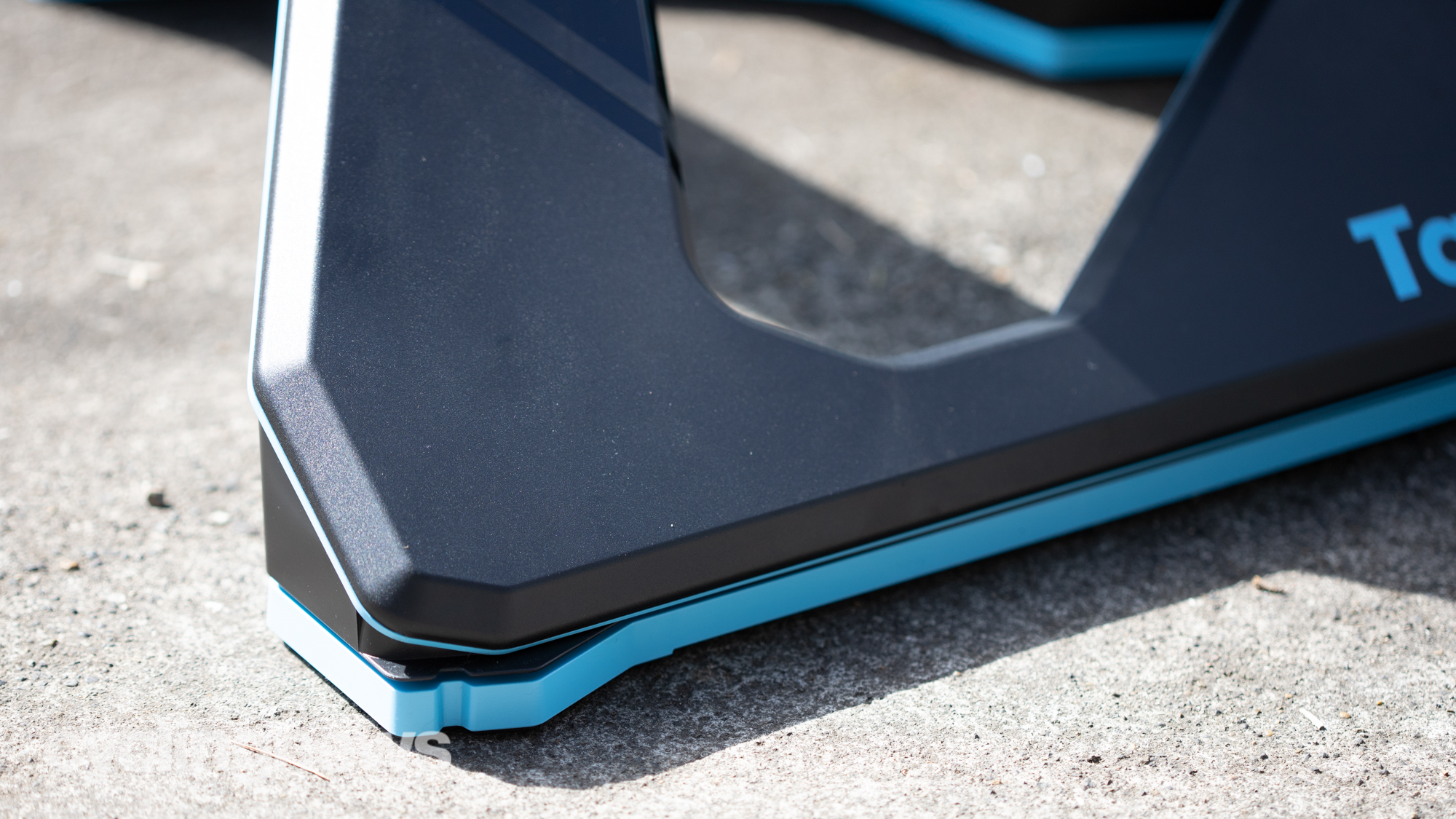
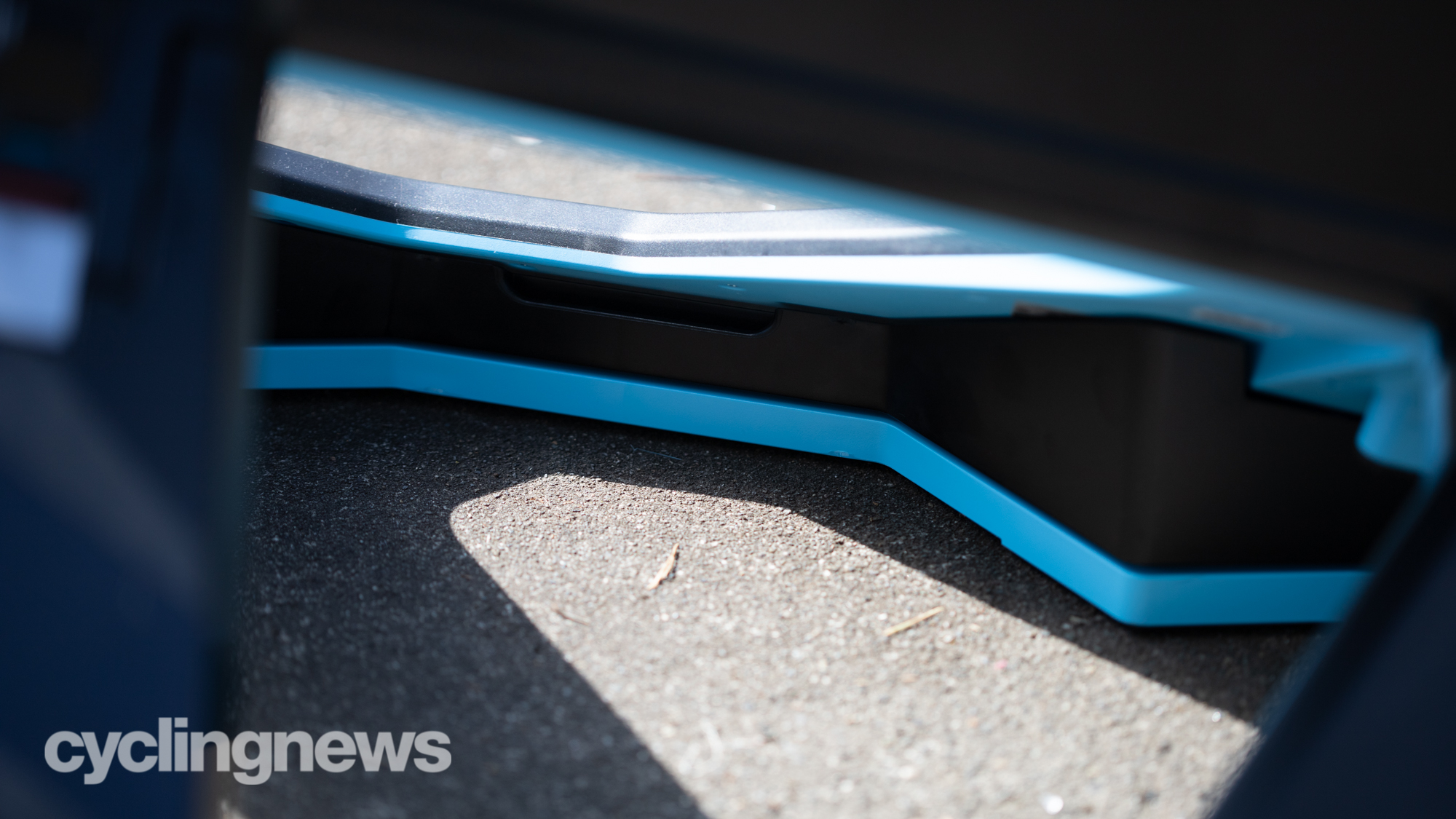
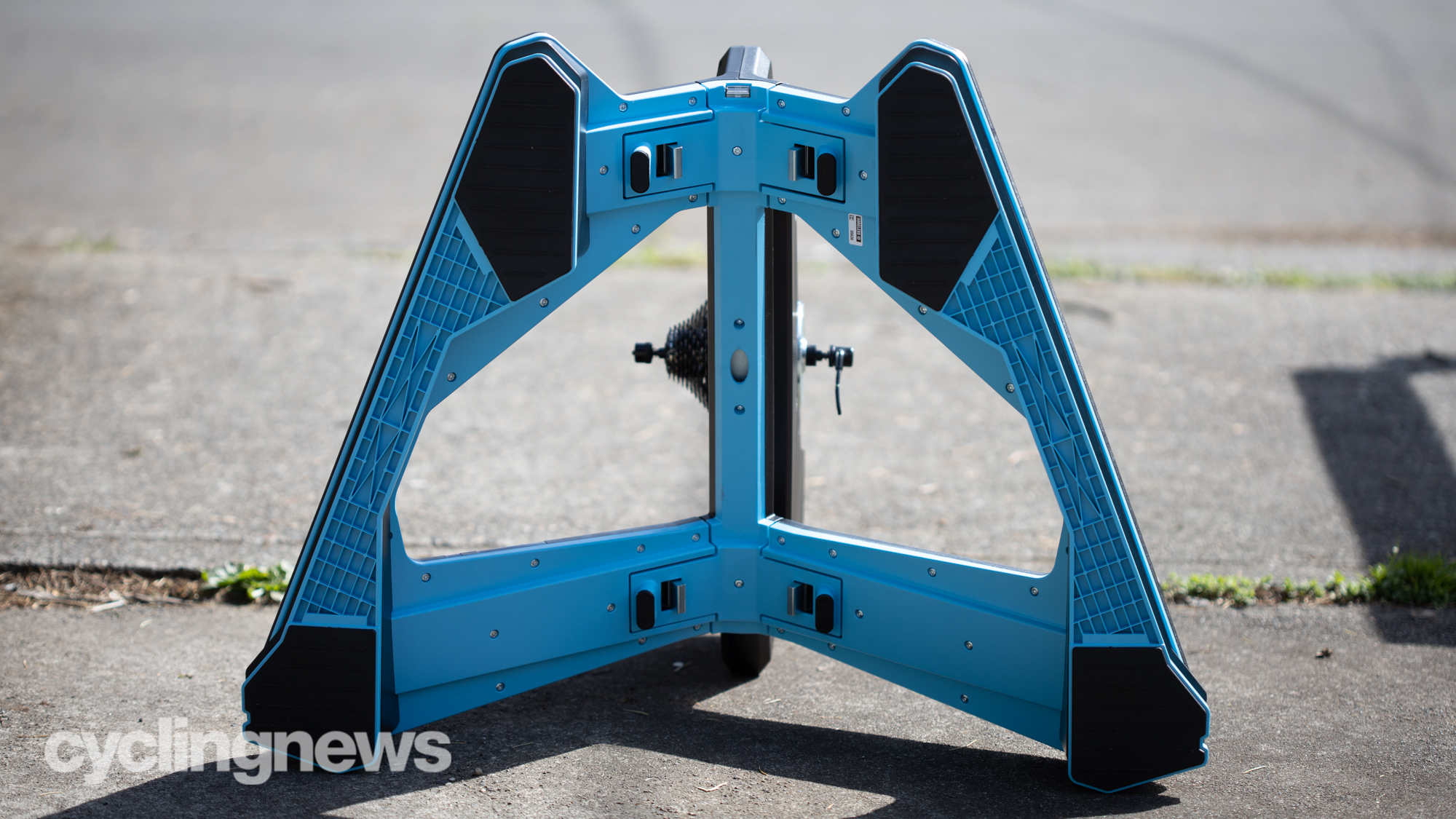
Design and aesthetics
Almost the entire height disappears when installed and all you see is a line of the light blue that Garmin Tacx uses as an accent colour on the trainer. From this perspective, even someone who owned a Neo 2T trainer would likely have a hard time spotting that there's something different. It's a design that feels as if it was always part of the Neo 2T trainer and not an add-on.
Installation is very easy. There are four rubber feet on the bottom of the Neo 2T that pull out without much effort - removing these feet are required to fit the Neo Motion plates in place. The outer edge follows the shape of the "wings" that support the Neo 2T trainer. There is also a magnet that fits into the space vacated by the rubber feet- this magnet ensure the two pieces fit in the right spot.
Up front there's a replacement for the front wheel block. Compared to the original piece, it's a longer, deeper wheel trough. There's an arrow that indicates where the front axle should align not to mention showing which way is the front. It is worth noting that there's a max tyre width of 28mm associated with the front wheel block. If you've got wider tyres you could ditch the wheel block but the high-riding rear means it would feel like you're on a bit of an incline.
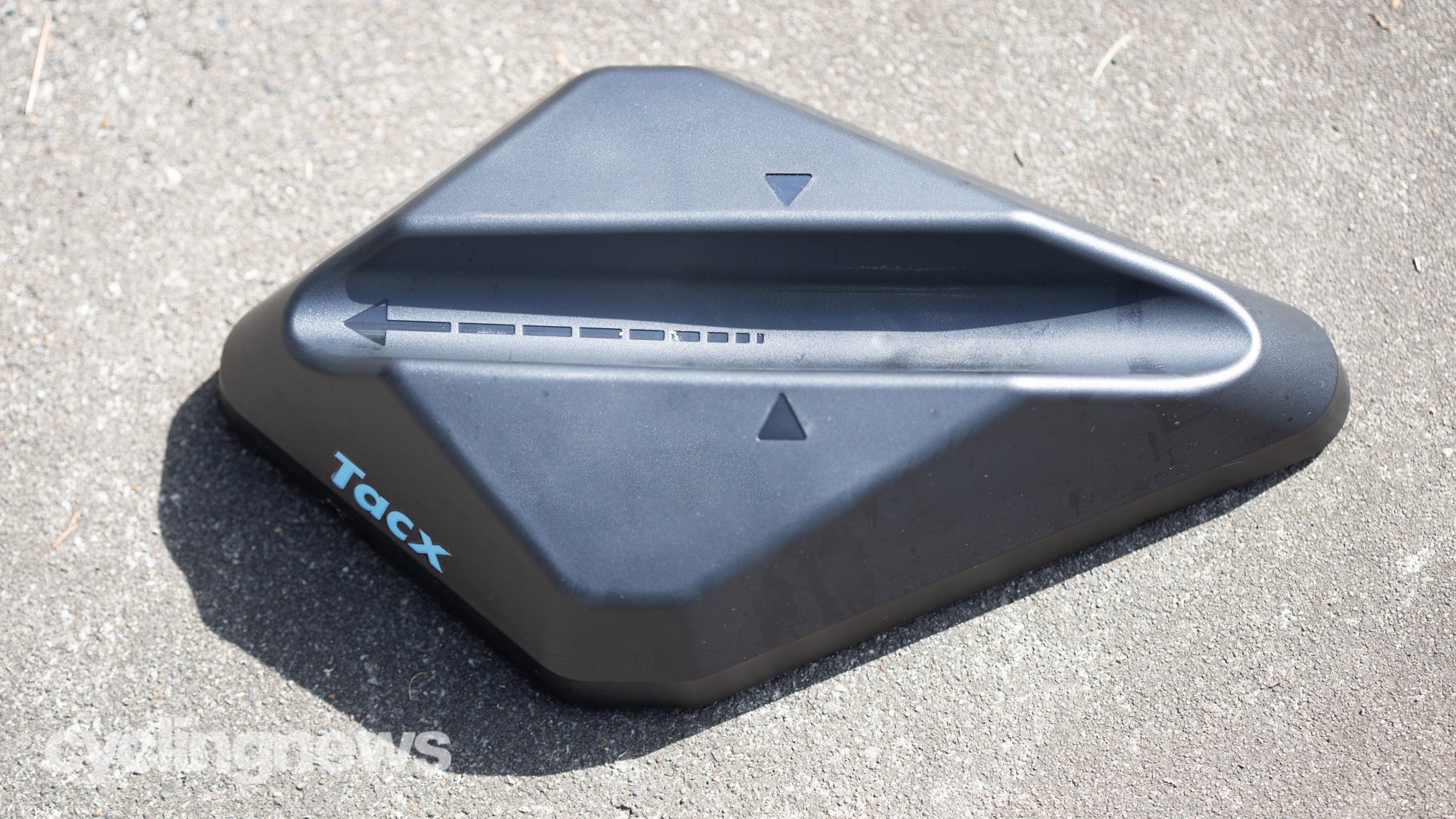
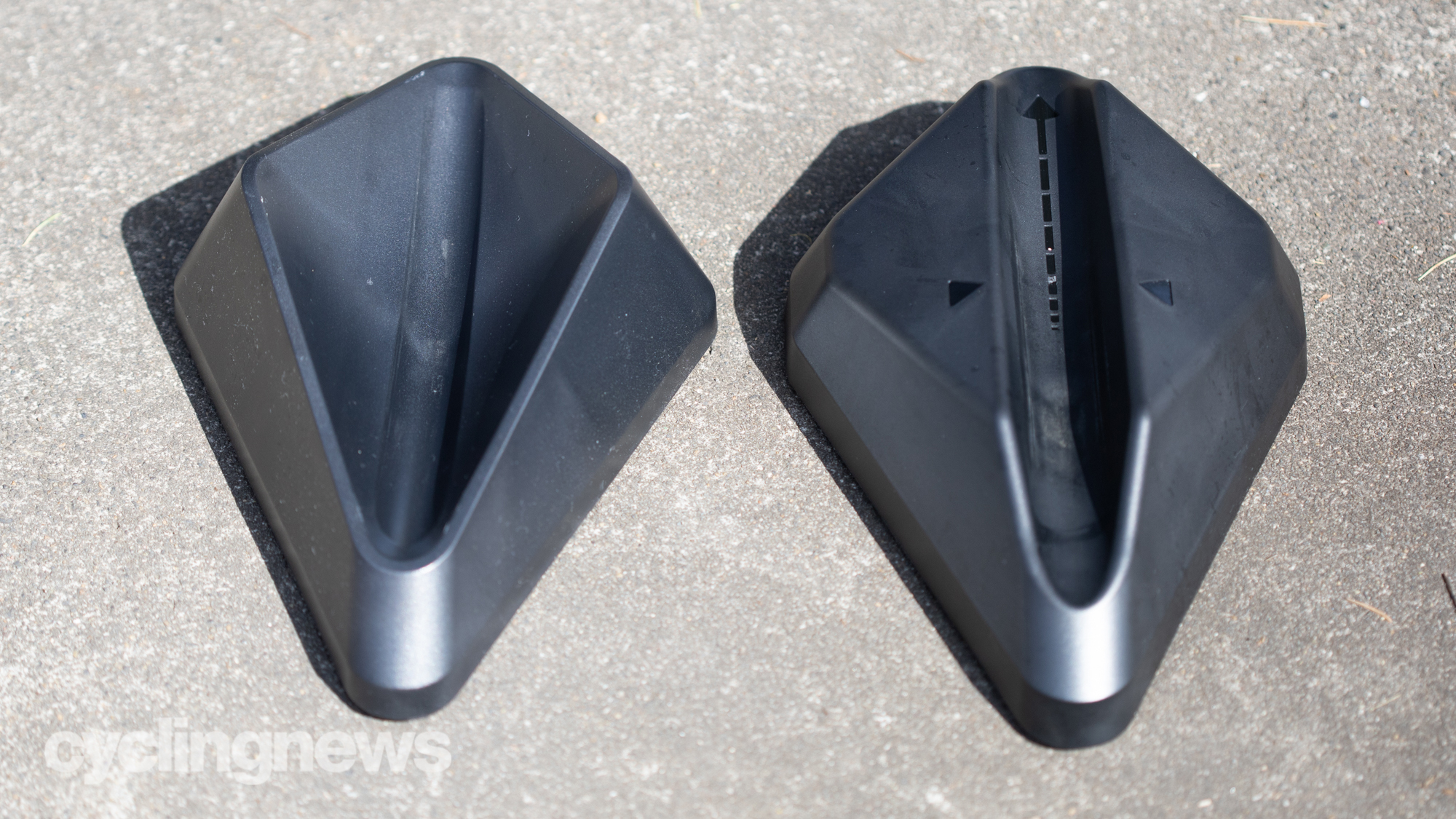
Performance
The installation of the Garmin Tacx Neo Motion plates is so easy I did it with the bike on the trainer. I leaned the trainer one direction, pulled out the rubber feet, then put the first motion plate in place. After a small amount of fiddling, it clicked into place. Next, I leaned the trainer and bike the other direction and did the same. You can't see what you are doing on either side but it's intuitive enough that it doesn't matter.
With the pieces in place, I gave it a bit of a test push. The plates ride on small metal wheels with impressively slick bearings. The movement feels fluidic and smooth. There's no resistance and you can gently push on the bike to rock it back and forth. It feels like one of those gliding rocker chairs.
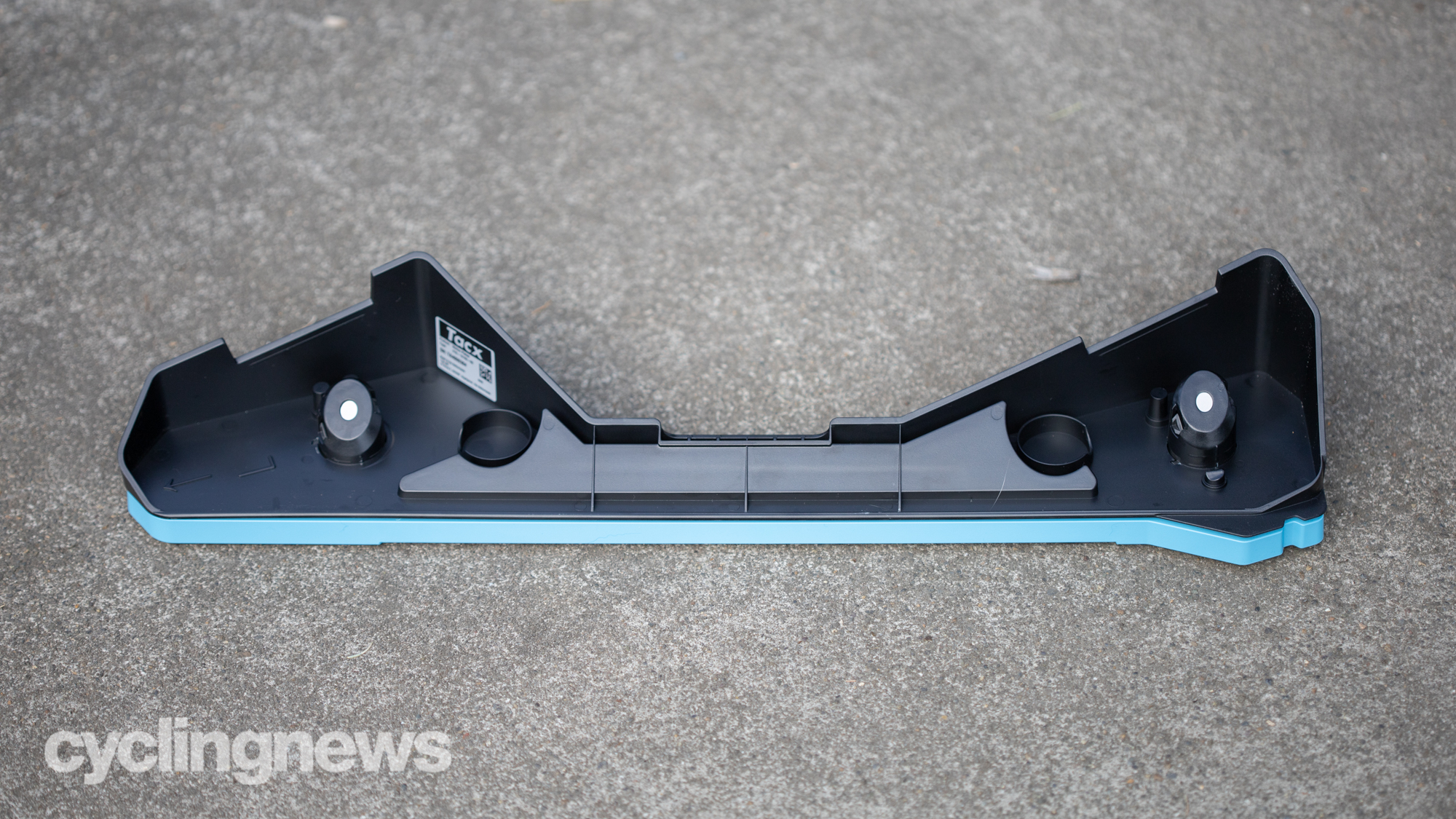
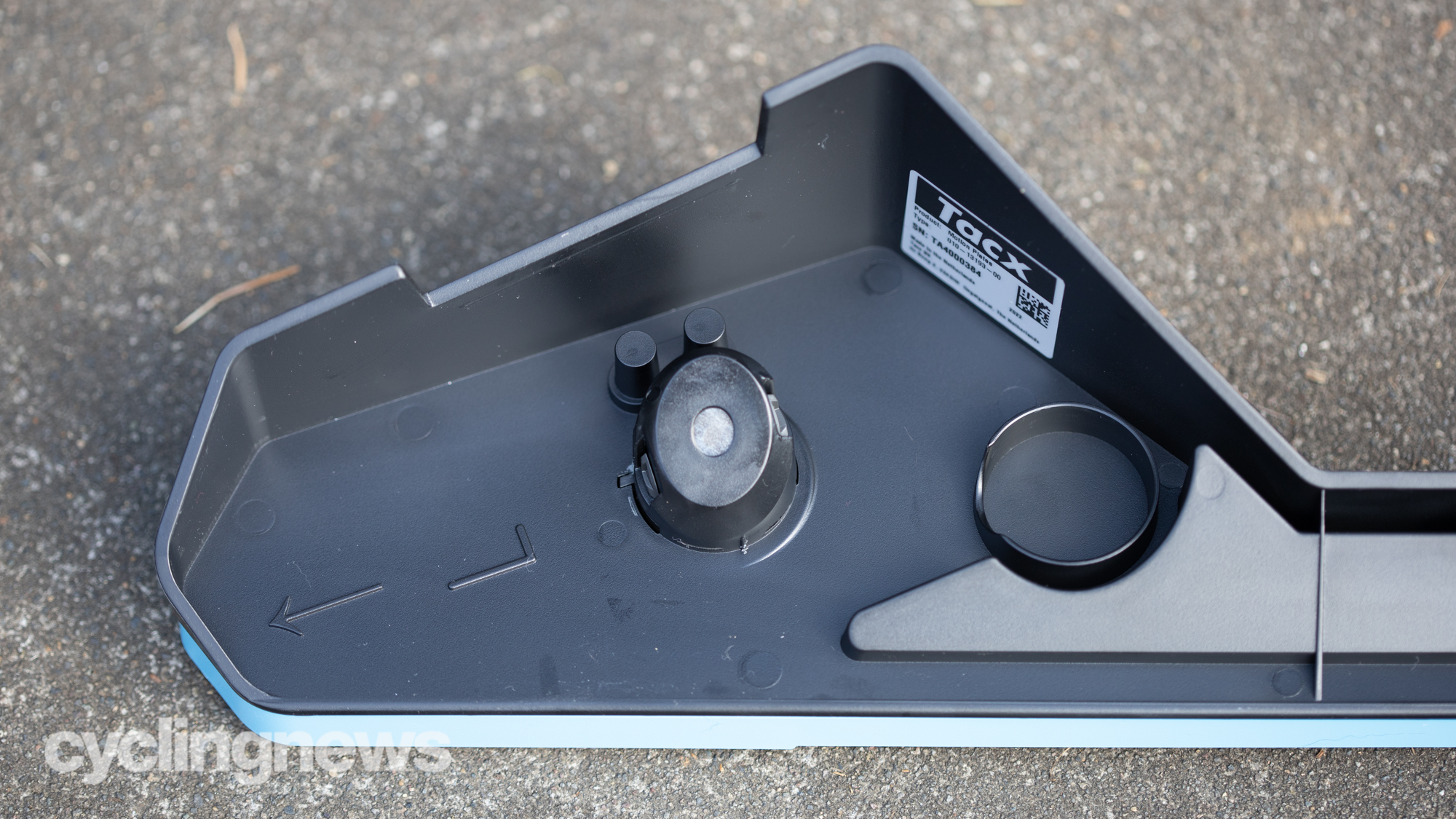
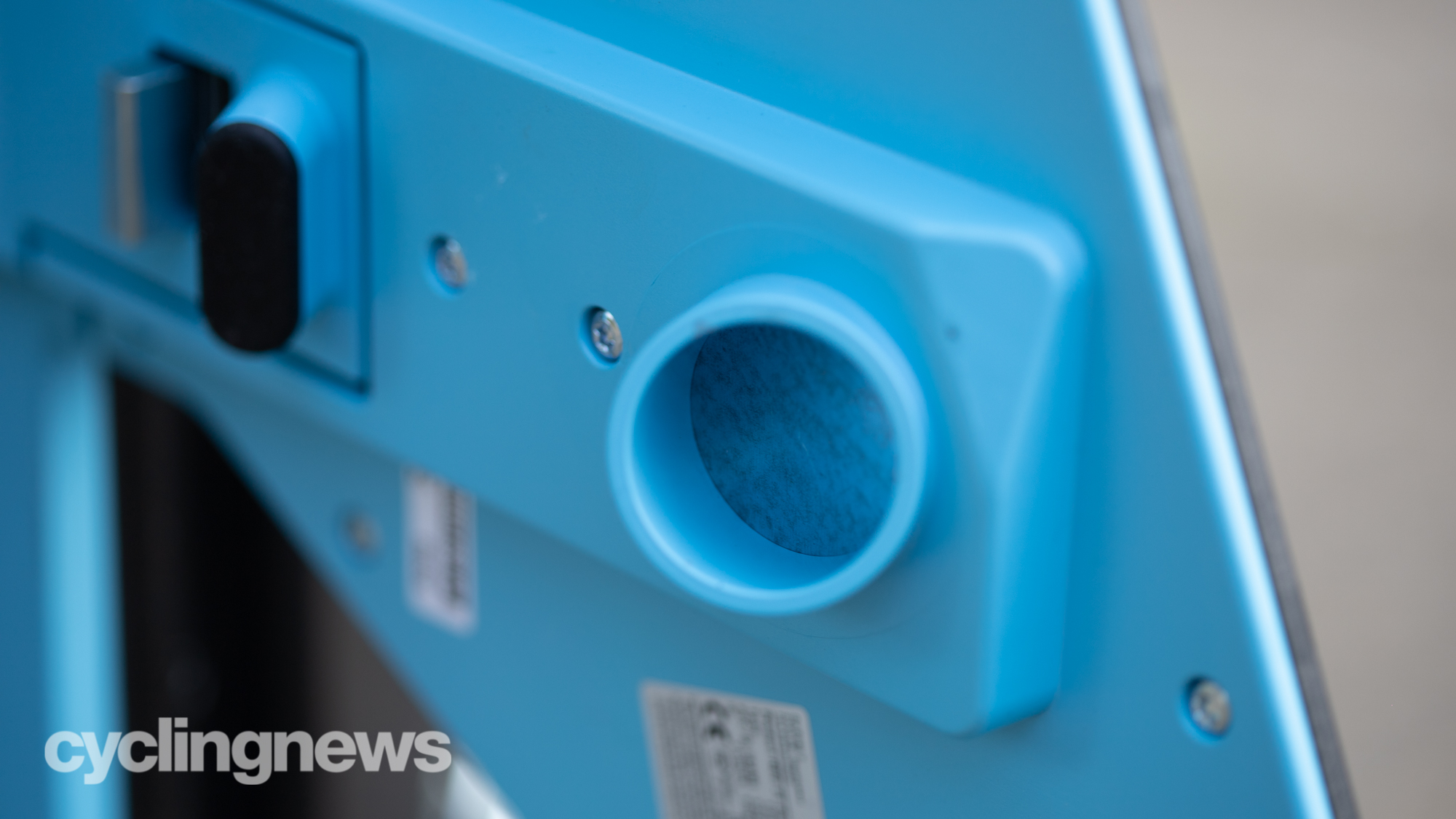
I was sent a pre-launch test unit and have been using the Garmin Tacx Neo Motion Plates for a while now. I've done a bunch of races plus some free riding and intervals. Free riding was the first thing I did and the first impression wasn't the best. There's 50mm / 2-inches of movement fore and aft. Half of that is forward and half back and when you hit the end of the range it gently bounces you back the other direction. When you jump on and try to test the motion it feels unnatural.
The next test I tried was doing the Mountain Route in Zwift. It wasn't a race so I spent a lot of the time standing with a low cadence. My movements were smooth and, in response, the Neo Motion plates felt perfectly natural. Without the plates, the side-to-side motion of the Neo 2T dominates the ride feel. With them in place, you don't notice the side-to-side movement much and the motion of the plates becomes the primary feeling.
The Garmin Tacx Neo Motion Plates remind me a lot of riding a set of rollers in that they reward you with smooth riding. If your movements are smooth, the motion feels completely natural. It's true when climbing but also when racing or doing intervals. There's enough range of motion to soak up an initial forward surge but if you bang down on the saddle as you crest a hill, or end a sprint, you'll bottom out the movement which feels unnatural.
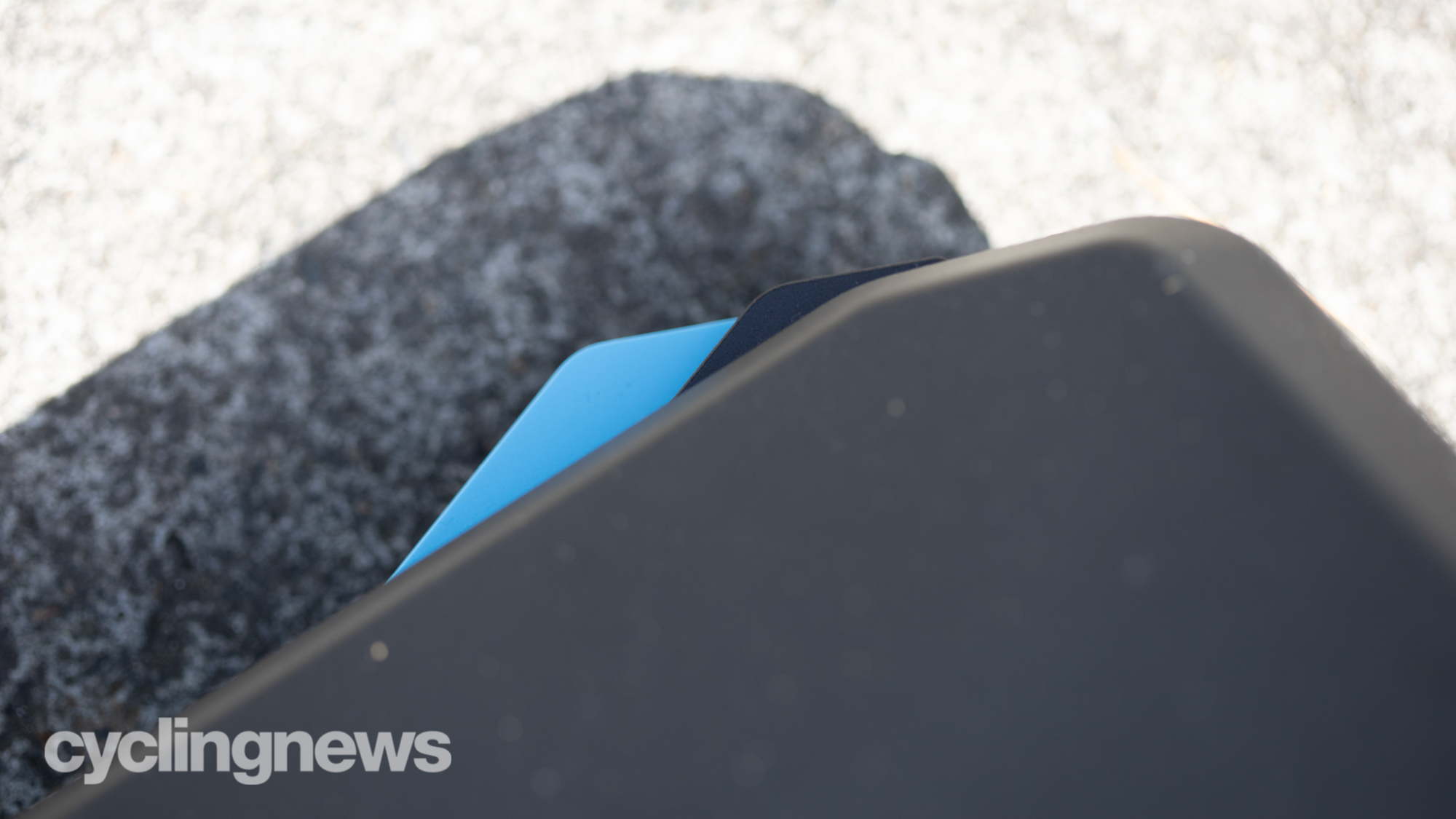
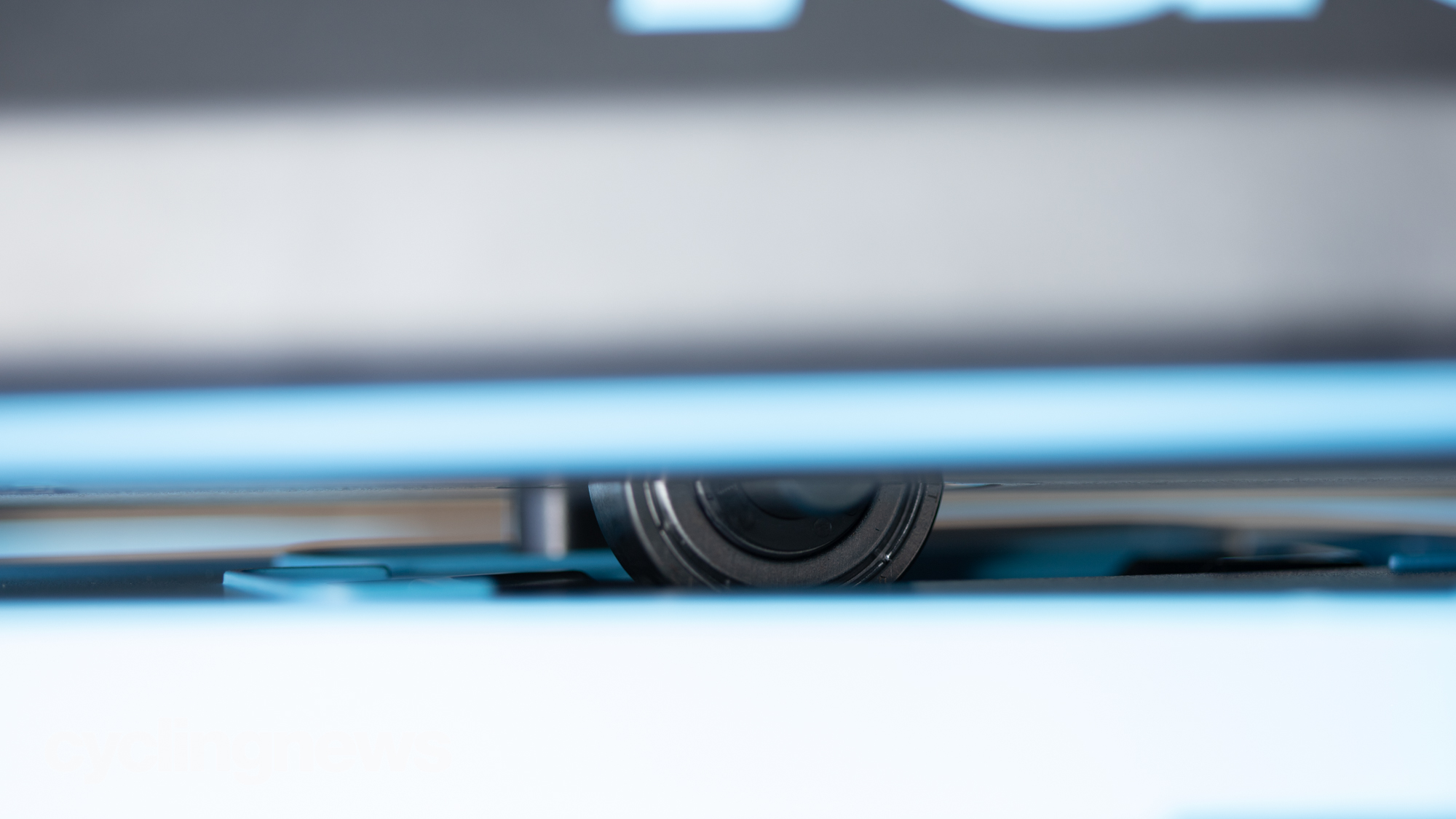
Verdict
Many companies are attempting to add motion to indoor riding and the debate currently doing the rounds is whether you need to replicate outdoor riding or just hit some of the key notes? I spent a long time trying to figure out if the Garmin Tacx Neo Motion plates actually replicate outdoor riding. It comes pretty close but it's limited to how smooth you can pedal. The times when I find it feeling the least natural is when I'm bridging a gap in a race. As you sprint it's fine but when you reach the group and bang down onto the saddle it will bounce off the stops a little. I find that a worthwhile trade-off for a better feeling ride most of the time.
The other big consideration is the price. Is a simple design worth the price asked? Again, it's hard to say for sure but if you have a compatible trainer the Garmin Tacx Neo motion plates take up no extra room and reward you with a much improved ride feel over the standalone Tacx Neo smart trainer.
Tech Specs: Garmin Tacx Neo Motion Plates
- Price: £259.99 / $299.99 / €299.99 / AU$469
- Dimensions: 582 mm x 122 mm x 102 mm (22.9 x 4.8 x 4.0in)
- Added height to trainer: 25 mm (1in)
- Range of motion: 50 mm (2in)
- Weight: 1.55 kg (3.41lbs)
- Compatible trainers: Neo, Neo 2, Neo 2T
- Front wheel support tire compatibility: Up to 28 mm
Looking to enhance your indoor cycling experience? Check out our Garmin discounts to save money on Garmin products.
Josh hails from the Pacific Northwest of the United States but would prefer riding through the desert than the rain. He will happily talk for hours about the minutiae of cycling tech but also has an understanding that most people just want things to work. He is a road cyclist at heart and doesn't care much if those roads are paved, dirt, or digital. Although he rarely races, if you ask him to ride from sunrise to sunset the answer will be yes. Height: 5'9" Weight: 140 lb. Rides: Salsa Warbird, Cannondale CAAD9, Enve Melee, Look 795 Blade RS, Priority Continuum Onyx

